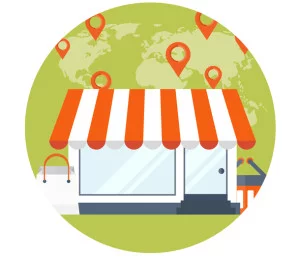 Amazon recently moved from a pure ecommerce retailer to opening its first physical location in Seattle. Much has been written about this trend in the past few months, suggesting that online retailers understand the value of an omnichannel approach, combining web, mobile and physical store location to reach customers better.
Amazon recently moved from a pure ecommerce retailer to opening its first physical location in Seattle. Much has been written about this trend in the past few months, suggesting that online retailers understand the value of an omnichannel approach, combining web, mobile and physical store location to reach customers better.
Various benefits of physical locations has been named by these online retailers, including helping customers better understand the brand value and the ability to actually touch and see the product.
Another benefit suggested by Amazon is leveraging their data to better align the merchandise with the local shopper:
“Amazon is betting that the troves of data it generates from shopping patterns on its website will give it advantages in its retail location that other bookstores can’t match. It will use data to pick titles that will most appeal to Seattle shoppers.”
– Seattle Times, November 2, 2015
This omnichannel approach is also a significant consideration for our clients and we factor in transactional ecommerce data for our customers when building models to predict location sales – right down to the department level. These models help our clients determine what merchandise to carry in general, and also establish the right merchandise mix at a particular location to maximize sales.
The belief that a bricks and mortar location will reduce ecommerce sales is also addressed in these models. In contrast, the opposite is often true, where opening a physical store actually increases ecommerce spend in a trade area. By combining forecasts for both ecommerce and physical store sales, a retailer can determine which physical location will deliver the greatest omnichannel sales.
While once seen as foes, ecommerce and bricks & mortar are becoming fast friends. If you’d like to explore more, download Tango’s Yum! Brands case study below.
